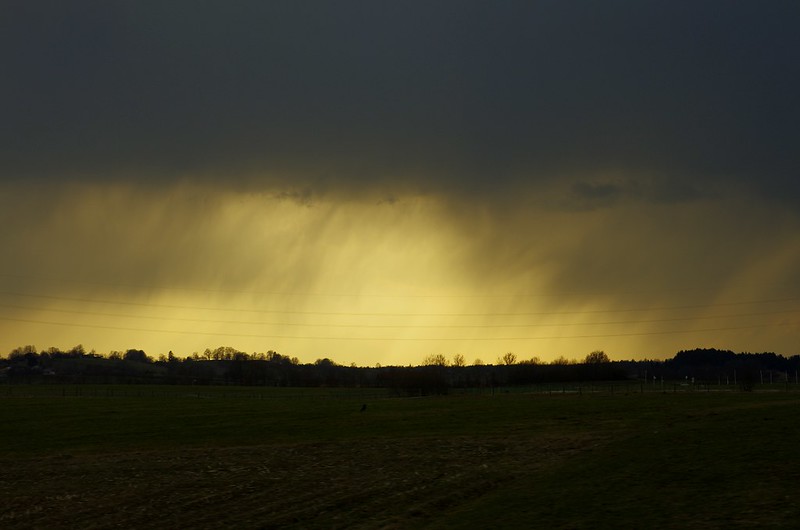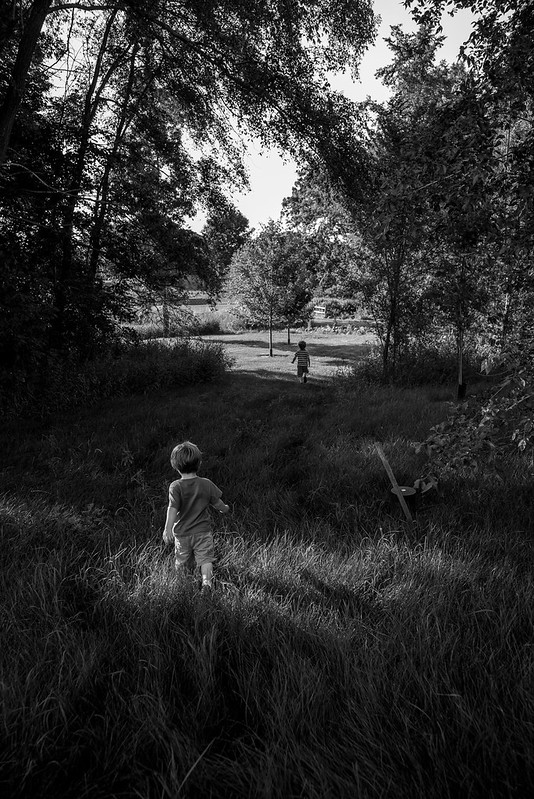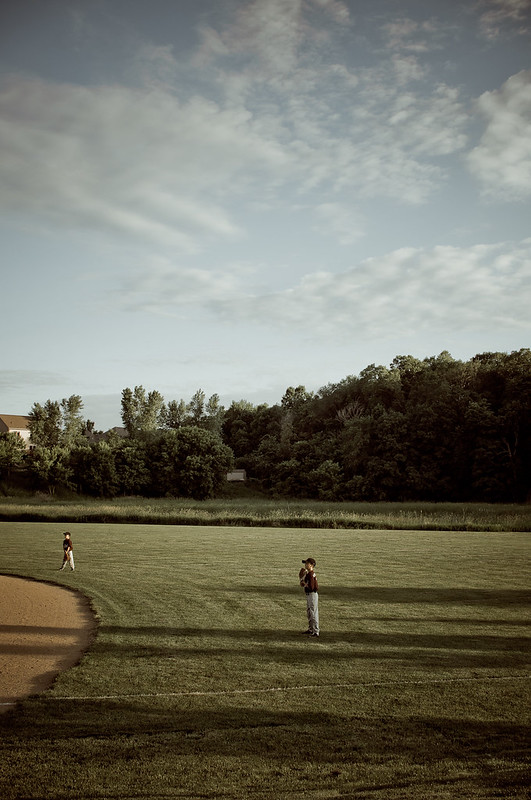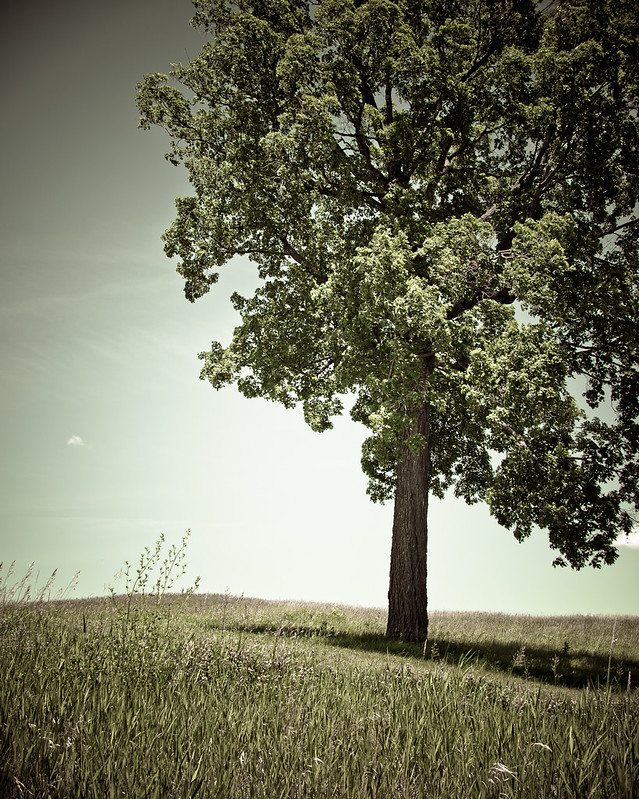Double posting all up in here... :-D Figured I'd share some examples of how the Rule of Thirds comes into plays in ways you might not realize, and how training yourself to use it can be a huge asset. (And by knowing it, it makes when you violate the rule all the better since you're going in knowing you're breaking the rules)
I tend to like to take 'road' shots, in which case the rule comes into play a lot.
This shot is a great example. The subject - the road and fogged lights dead center - are framed by the rest of the shot. That framing? Rule of thirds.
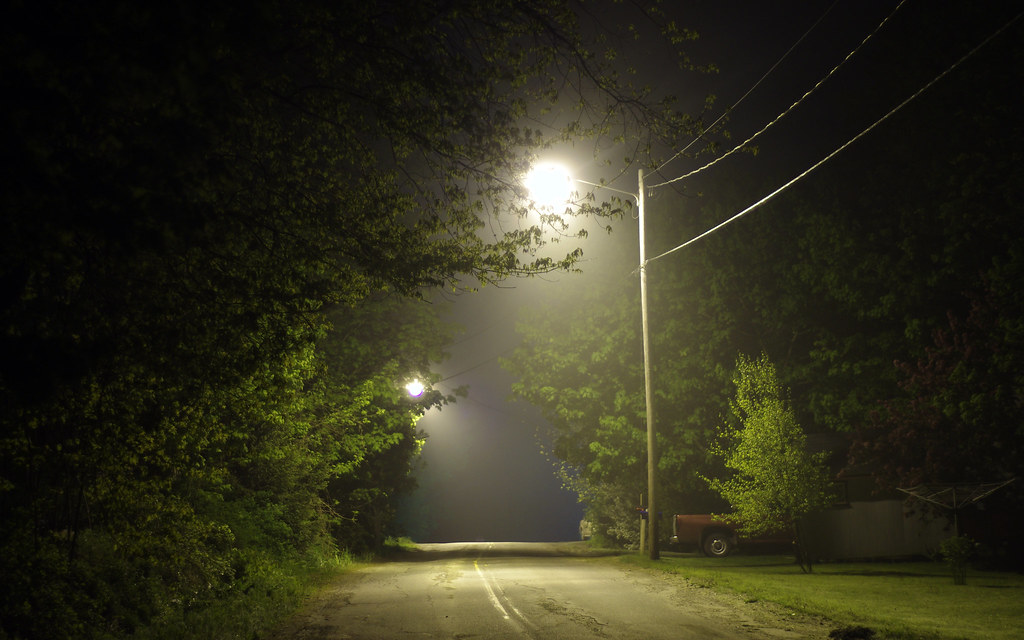
Same here. Even when the RoT is being used on negative space.
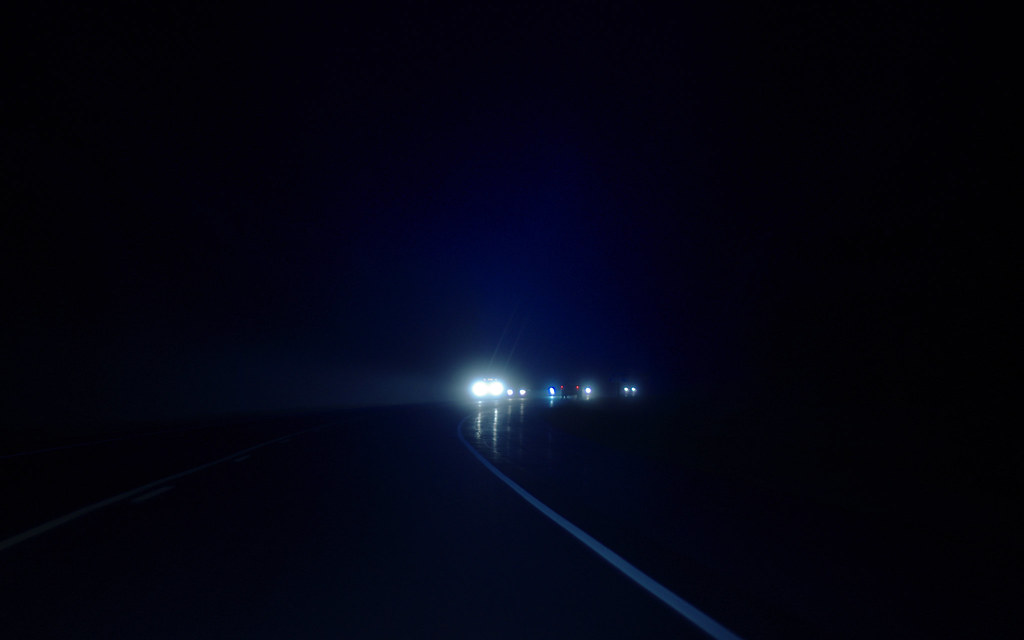
If I'd centered the subject here, this shot just would not have worked. At all. By placing the men on the left third of the shot, the eye gets naturally drawn by the hose to the secondary subject in the background. This shot is kind of interestiong because the man pointing is actually on the 'wrong' third of the shot. You want to follow to where he's pointing, which isn't actually the subject. If they hadn't been spraying the hose, this shot would have been 1000x more awkward and not worked.
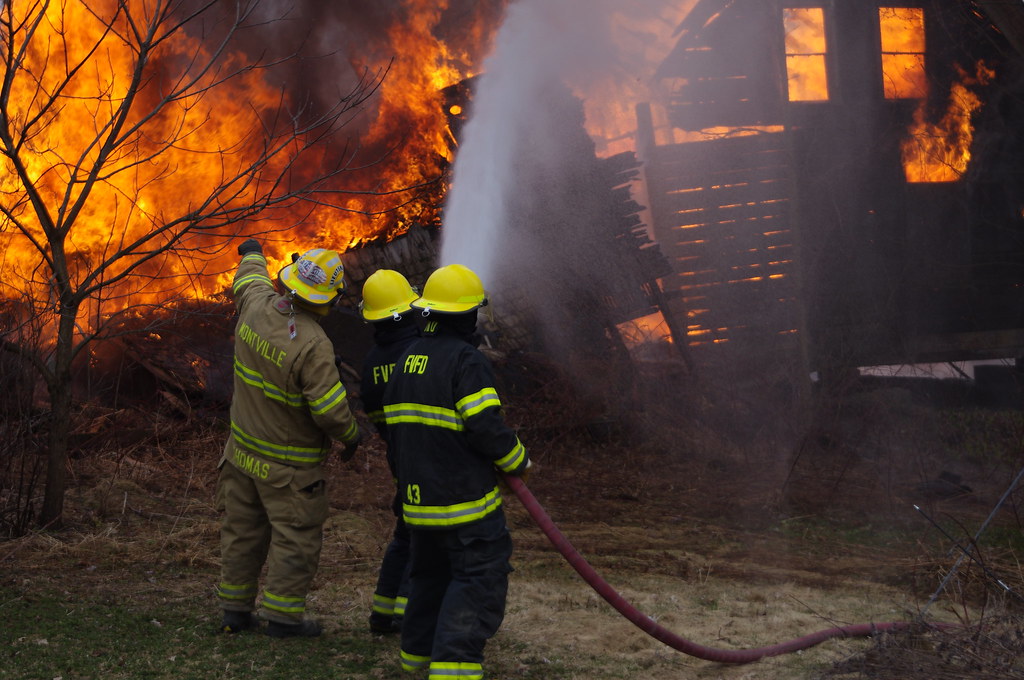
This a really, REALLY moldy oldy, and at first glance the church is dead center - until you realize the walls and background are right along the lines of the RoT.

Same deal here. At first the tree is dead center - except it's 'framed' by the RoT.
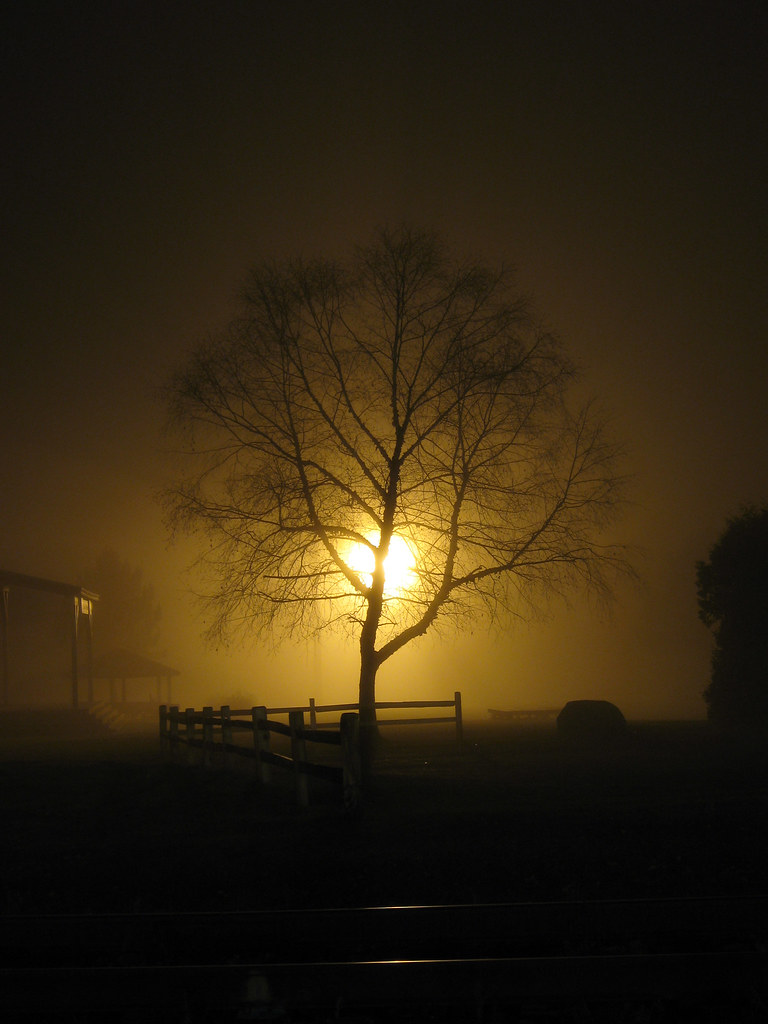
Even this shot roughly follows the RoT.

Basically, don't look at it as "I need to place things on the points/lines" its 'remember that the eye is going to follow the stuff along those points and lines more easily then those not.
If you practice at it enough, your eye will actually start snapping shots on the RoT without you even thinking about it.
A good example of that is this shot - it was taken during a parade in the middle of a set of like... 120 shots. I certainly wasn't thinking "I NEED TO FRAME THIS" when I was shooting it, I simply was out having fun snapping photos. By instinctively RoT-ing the shots, they came out with a far less of a need to go in and beat them with the post process bat afterwards to crop out stuff.



 Similar Threads
Similar Threads 








